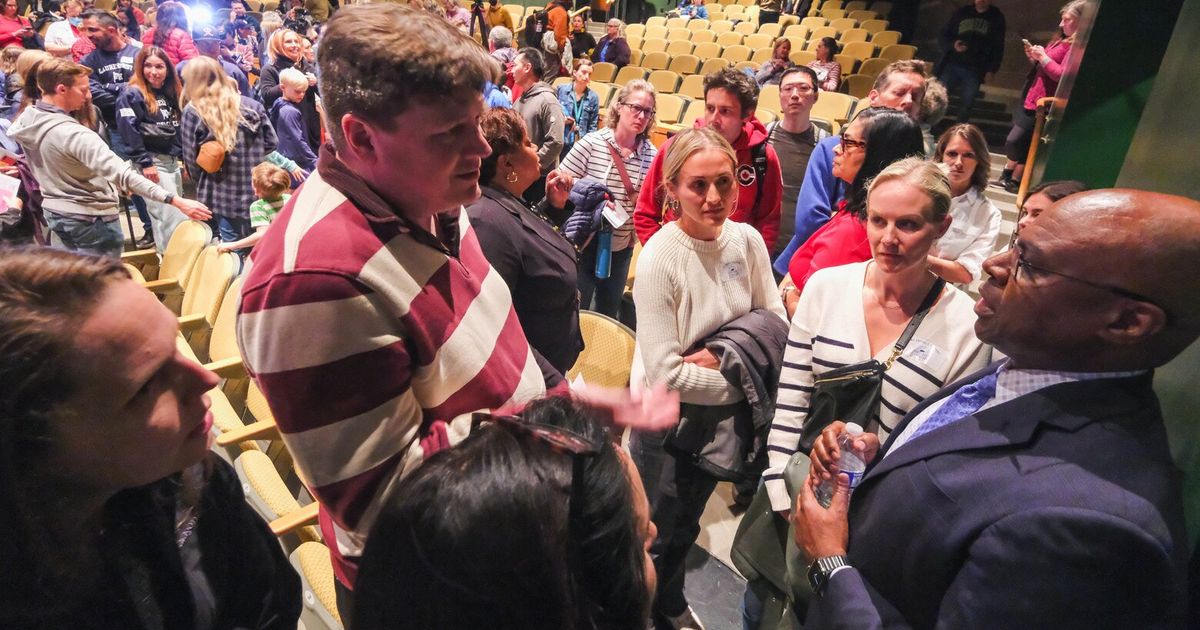Families hoping to learn whether their schools are on Seattle Public Schools’ closure list will now have to wait at least until September to find out.
Superintendent Brent Jones said in a note to families on Tuesday that the anticipated update on the proposal to close about 20 elementary school sites at Wednesday’s School Board meeting will not include a “school closure list.”
Instead, Jones plans to give more details on what’s driving the decision to pursue school closures, the selection criteria, and the budget and program implications of shutting down nearly a quarter of Seattle’s elementary schools. The update will also address how community feedback will be used.
Jones’ letter comes after the district held four community meetings on the proposed closures — which SPS calls “a system of well-resourced schools” — in May and June.
Parents and residents had a lot of questions about the savings the district would realize from closing schools, whether students will have to travel farther to get to school, the impact on option schools, and how equity will factor into the decision-making and in the outcomes.
While district officials answered some of those questions at the forums, they didn’t have answers to all of them.
Jones was expected to present his closure proposal and an analysis of the impacts at a June 10 board meeting. That meeting was rescheduled in part because of the June 6 shooting at Garfield High School, which left 17-year-old
student Amarr Murphy-Paine dead.
While the tragedy was a determining factor, School Board President Liza Rankin said at the time that she wanted any closure plan to fully take into account the feedback from parents and the community. Not enough time had elapsed between the end of the meetings and the planned presentation for those comments to be factored in, she said.
In Tuesday’s note, Jones wrote: “We’ve heard from our community. Families and staff want to understand our planning process and react to proposals. The end of the school year and summer is not an ideal time for community engagement.”
Jones said his team will work in the coming months “to evaluate and consider the feedback we have heard and refine the plan that will be presented to our board.”
SPS had initially signaled that it hoped to approve the closure plan in late fall, with enough time to prepare for it to go into effect in the 2025-26 school year. The vote to approve the plan is now expected in December, before winter break.
Given that state law requires a hearing at every school site that’s slated to close, it would be a tight schedule to make the December vote if the list is unveiled in September.
But taking the summer to create a plan gives the district a chance to have more discussion, incorporate community expertise and get outside experts to weigh in, Jones said.
“This will help ensure our plans are solid and will improve outcomes for students,” he said.
The district has pitched its “well-resourced schools” proposal as an effort to help close a $129 million deficit in the 2025-26 school year and improve academic and support services for students at the remaining elementary schools. SPS says it is inefficient to run a system of 105 schools for nearly 48,000 students.
Twenty-nine of the district’s elementary schools have fewer than 300 students, according to SPS. The district says it’s difficult to fully staff schools with low enrollment with a full-time nurse, a counselor and an assistant principal. That leads to inequitable staffing and program offerings across the district, officials said.
The proposed new schools will have around 400 to 450 students, Jones told residents at the forums.
In the reconfigured system, elementary schools will have full-time art, music and physical education teachers, pre-K and inclusive classrooms for special education students who need intensive support services.
Seattle, like many other urban school systems, is grappling with declining enrollment, the end of federal COVID-19 relief aid and inflation. While the state covers basic education costs, all of the expenses related to providing special education services, transportation and insurance are not covered.
The $1.25 billion budget for next school year, the subject of a public hearing on Wednesday, had a $104 million funding gap.
